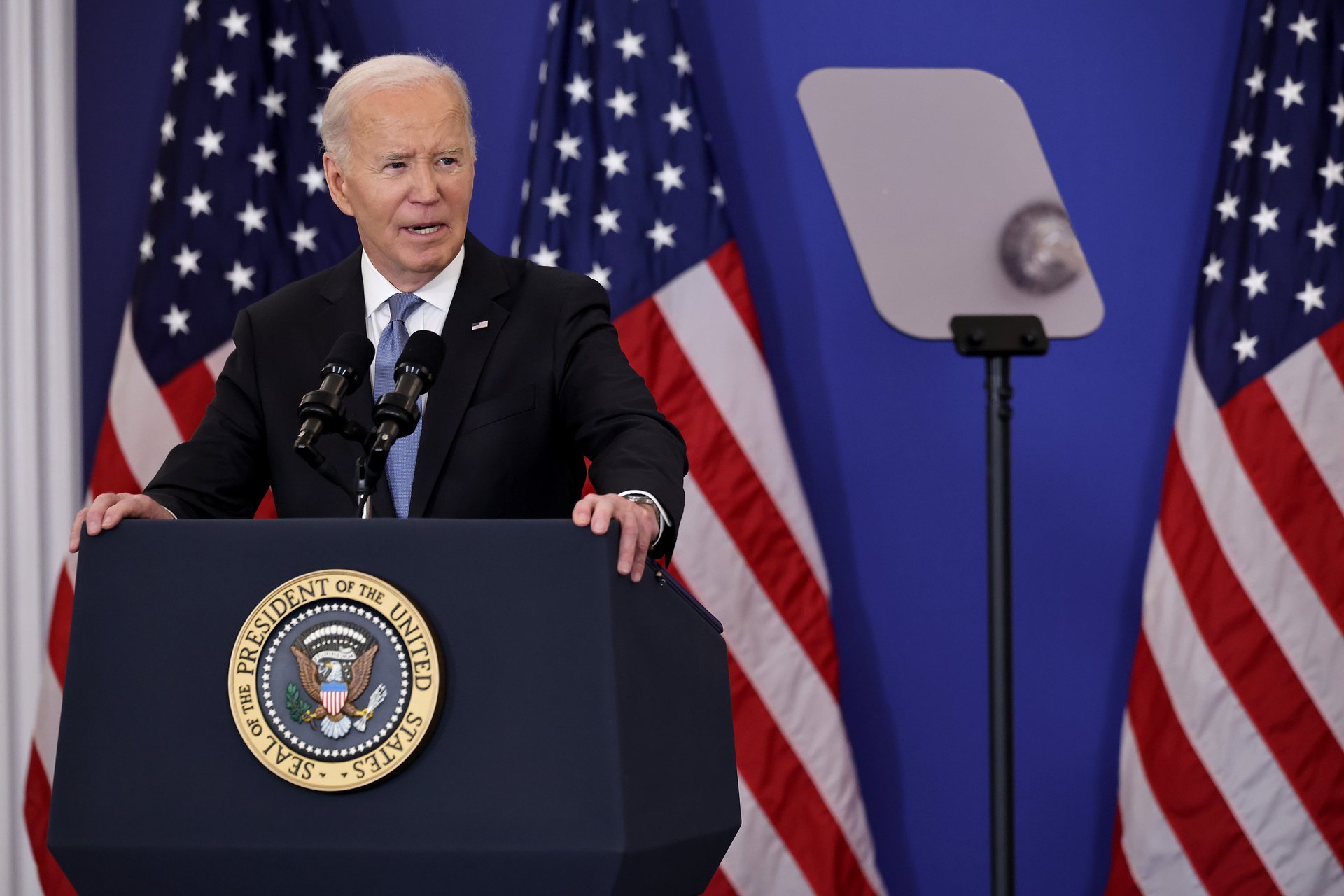🌏 Biden’s chip restrictions
Plus: Costco defends its DEI strategy

Good morning, Quartz readers!
Suggested Reading
Here’s what you need to know
Biden moves to stop China from securing TSMC and Samsung’s next-gen chips. As his presidency nears its end, the administration is calling for tighter regulations to keep advanced chips out of China’s hands.
Related Content
2024 ended with softer core inflation than forecasted. Fed officials, however, are wary of a possible inflation rebound in the coming year.
Walgreens confessed, locking up items actually hurts sales. CEO Tim Wentworth revealed that keeping items in glass-shelves limits what customers can purchase.
Trump’s new labor pick may signal relief for the gig economy. The appointment could lead to the reversal of policies that tightened labor regulations on gig economy workers.
The Securities and Exchange Commission (SEC) hit Elon Musk with new charges over the 2022 Twitter deal. The move comes less than a week before political change on Capitol Hill is set to take place.
Costco bucks the DEI trend – customers are concerned
Costco is doubling down on its diversity, equity, and inclusion (DEI) efforts, despite mounting scrutiny. That prompted CEO Ron Vachris into the fray.
Vachris personally addressed customer concerns, particularly regarding Costco’s race and gender-based hiring practices. In one email exchange, he clarified that the company doesn’t use quotes but focuses on equal opportunities and fair pay for all employees.
A shareholder vote is scheduled for Jan. 23, which could lead to major changes for Costco, with the potential to reshape DEI programs. So what did Costco’s Vachris tell that one concerned customer? Quartz’s Francisco Velasquez has more.
America’s most and least Ozempic-friendly states
GLP-1 medications like Ozempic, Wegovy, and Zepbound have surged in popularity in the U.S., thanks to their dual role in managing diabetes and aiding weight loss.
The drugs mimic hormones that control blood sugar and suppress appetite, leading to skyrocketing sales. Experts predict the global market could reach $105 billion by 2030, with 31.5 million Americans expected to use them by 2035.
However, because prescription rates vary widely across states, some are showing much higher demand than others, according to data from PurpleLab, a software company. Which states made the list? Quartz’s Bruce Gil breaks it down.
Did you know we have two premium weekend emails, too? One gives you analysis on the week’s news, and one provides the best reads from Quartz and elsewhere to get your week started right. Become a member or give membership as a gift!
Our best wishes on a safe start to the day. Send any news or comments to [email protected]. Today’s Daily Brief was brought to you by Francisco Velasquez and Audrey McNamara.